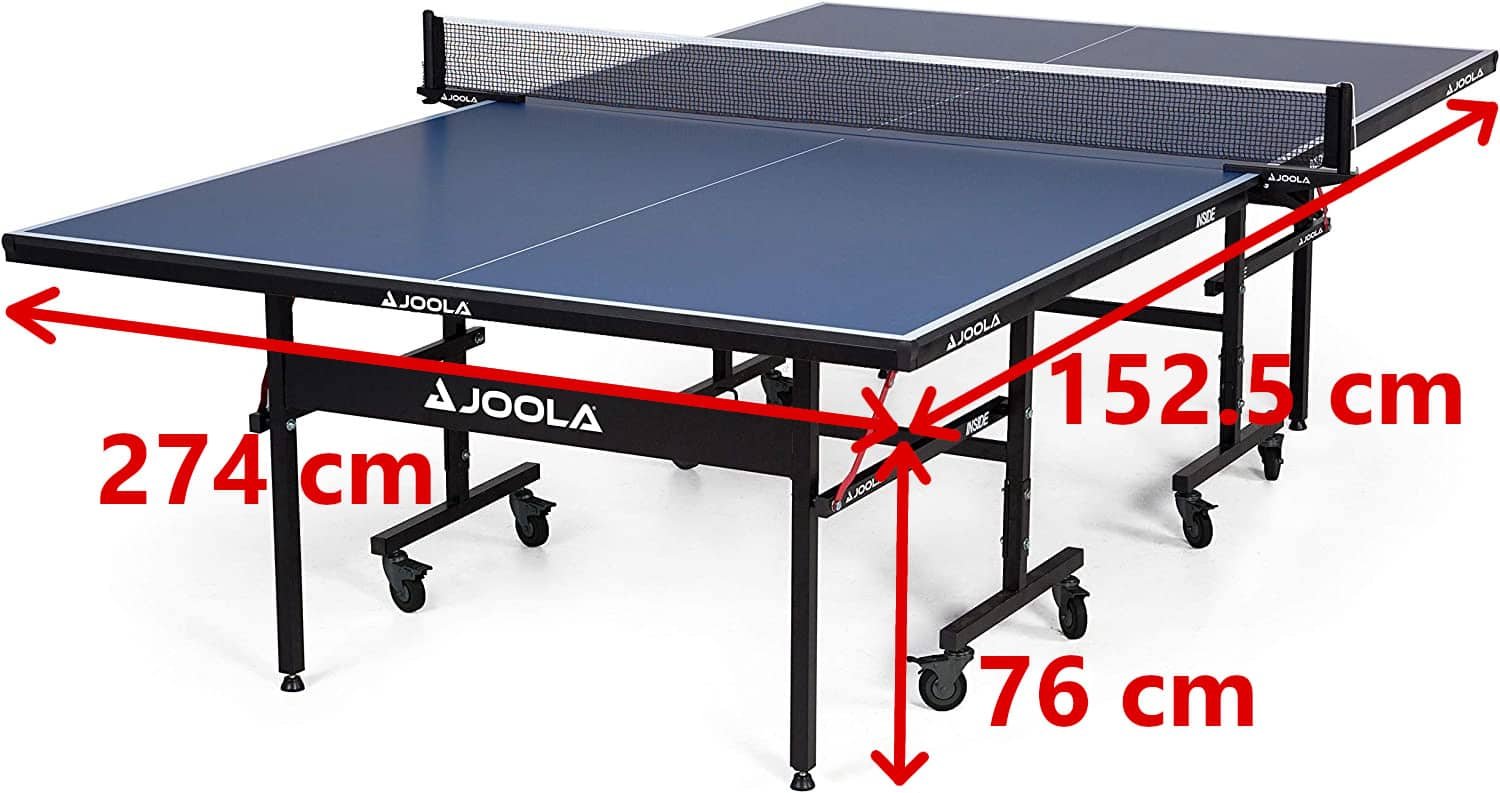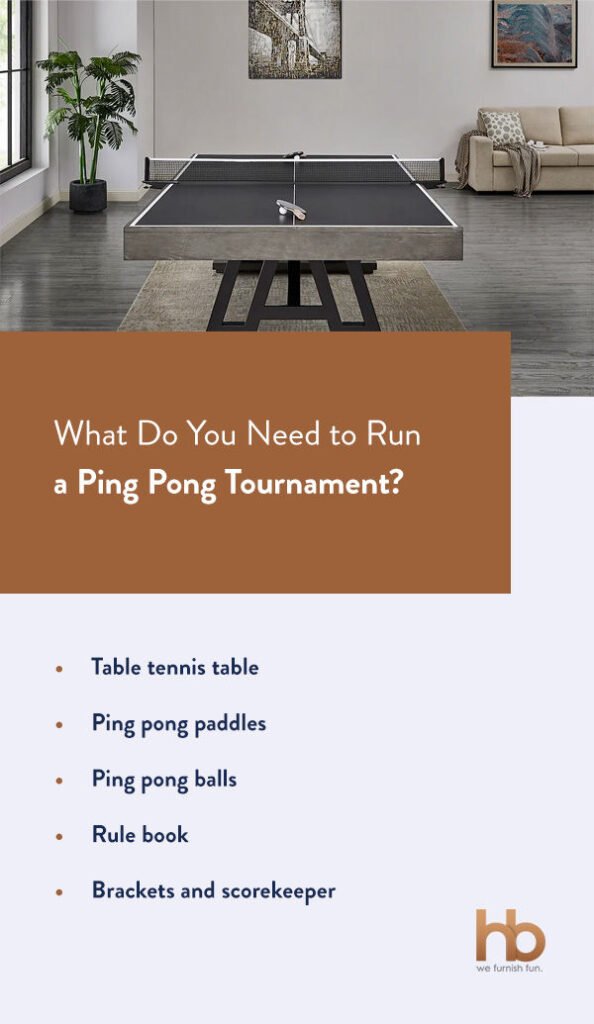
Ping pong, also known as table tennis, is a popular sport that combines skill, strategy, and fast reflexes. While it can be played both recreationally and competitively, having the right ping pong table is essential for an optimal playing experience. Whether you’re a beginner looking to set up a casual game room or a seasoned player aiming to practice professionally, understanding the different aspects of ping pong tables will help you make an informed choice.
This comprehensive guide covers everything you need to know about ping pong tables, from their history and types to maintenance tips and buying considerations. By the end of this article, you’ll have a complete understanding of what makes a great ping pong table and how to choose one that best suits your needs.
Introduction to Ping Pong Tables
Ping pong tables are specially designed surfaces that provide a consistent and reliable playing experience for table tennis enthusiasts. The standard ping pong table is 9 feet long, 5 feet wide, and 2.5 feet high. It is divided into two equal halves by a net, which is usually 6 inches high. These tables come in various materials, sizes, and features, each designed to cater to different environments and levels of play.
Whether you play ping pong casually with friends or are preparing for competitive matches, having a well-suited table can greatly enhance your enjoyment and skill development. Choosing the right table involves understanding various factors such as table construction, playing surface, portability, and maintenance needs.
History of Ping Pong Tables
The origins of ping pong date back to the late 19th century in England, where it began as a casual after-dinner game played among the upper class. Initially, makeshift equipment like cigar box lids as paddles and champagne corks as balls were used. As the popularity of the game grew, manufacturers started producing more formalized equipment.
The first official ping pong tables were often simple wooden boards. Over time, manufacturers refined the design, introducing standards in size and materials. The sport gained significant recognition in the early 20th century, with the formation of official organizations such as the International Table Tennis Federation (ITTF) in 1926, which set the standard dimensions and regulations for ping pong tables used in competitive play.
Types of Ping Pong Tables
Indoor Ping Pong Tables
Manufacturers design indoor ping pong tables for use in controlled environments, free from the impact of weather and temperature changes. They typically use medium-density fiberboard (MDF) or similar materials to provide a consistent bounce and smooth playing surface. Indoor tables work best in basements, game rooms, or dedicated sports areas within homes and recreational facilities.Indoor tables are ideal for basements, game rooms, or dedicated sports areas within homes and recreational facilities.
Outdoor Ping Pong Tables
Outdoor ping pong tables withstand various weather conditions, including rain, sunlight, and wind. Manufacturers often make these tables from materials like aluminum or synthetic laminate to resist warping and rusting. They usually coat the frames and legs with weatherproofing materials to prevent corrosion. Outdoor tables are perfect for patios, backyards, and parks, allowing you to leave them out year-round.
Conversion Tops
Conversion tops offer a versatile solution for those who want to convert an existing pool or dining table into a ping pong table. These tops are simply placed on top of another table and secured with clamps. Conversion tops are easy to store and set up, making them a great option for those with limited space or budget.

Mini and Midsize Tables
Mini and midsize tables cater to those who have space constraints or want a more casual playing experience. These tables are smaller than standard-sized tables, making them easier to fit in compact areas like apartments or children’s playrooms. While they provide the fun of playing ping pong, their reduced size makes them less suitable for serious practice.
Key Features of Quality Ping Pong Tables
Table Surface Thickness
The thickness of the playing surface significantly affects the bounce quality of the ball. High-quality tables generally have a surface thickness ranging from ¾ inch to 1 inch (19mm to 25mm). Thicker surfaces offer better ball bounce, making them ideal for competitive play. Thinner surfaces may be more affordable but can provide inconsistent bounce, making them better suited for recreational use.
Frame and Legs
The frame and legs of a ping pong table contribute to its stability and durability. High-end tables feature sturdy steel frames and legs that are resistant to bending and wobbling. Adjustable leg levelers are a useful feature, allowing the table to be set up on uneven surfaces. For maximum durability, look for tables with powder-coated or galvanized steel frames.
Net and Post System
A reliable net and post system is essential for separating the two halves of the table and ensuring fair play. Quality nets are easy to attach and remove and come with adjustable tension. Look for nets made from durable materials that won’t sag over time. The post system should be sturdy and secure, providing a consistent net height throughout gameplay.
Table Foldability and Portability
Foldable ping pong tables offer the convenience of easy storage and transportation. Many tables come with a folding mechanism that allows one or both halves to be folded vertically. This feature is especially useful for solo practice, as one half can be folded up to create a rebound surface. Portability is enhanced by built-in wheels, which allow the table to be moved easily.
Wheels and Brakes
Tables with wheels are easier to move and position. Look for tables with large, smooth-rolling wheels that can handle various floor surfaces. Brakes are an important feature to prevent the table from shifting during play. Locking mechanisms ensure that the table remains stable when set up for games.
How to Choose the Right Ping Pong Table
Space Requirements
Before purchasing a ping pong table, measure the available space to ensure it can accommodate the table and provide enough room for players to move around. A standard ping pong table requires a playing area of at least 19 feet in length, 11 feet in width, and 8 feet in height. If space is limited, consider a midsize or foldable table.
Skill Level and Usage
Consider who will be using the table and how frequently it will be played. Beginners and recreational players may be satisfied with an affordable, lightweight table, while serious players and those practicing for competitions will benefit from investing in a table with a thicker surface and sturdier construction.
Budget Considerations
Ping pong tables come in a wide range of prices, from budget-friendly options under $200 to high-end models that can cost over $1,000. Determine your budget and look for tables that offer the best combination of quality, features, and price within that range. Remember that investing in a quality table can provide better playability and durability.
Brand and Warranty
Reputable brands often provide reliable quality and customer support. Research brands known for their high-quality ping pong tables, such as Butterfly, JOOLA, Stiga, and Cornilleau. Check the warranty offered by the manufacturer, as this can provide peace of mind in case of defects or issues with the table.
Maintenance and Care of Ping Pong Tables
Cleaning and Surface Care
Regular cleaning is essential to maintain the playing surface and extend the life of the table. Use a soft, dry cloth to wipe down the surface after each use. For deeper cleaning, use a mild soap solution and a damp cloth. Avoid harsh chemicals or abrasive materials that can damage the surface. For outdoor tables, clean the surface and frame regularly to remove dirt and prevent rust.
Storage Tips
When not in use, fold the table and store it in a dry, indoor location. If storing outdoors, use a table cover to protect it from the elements. Folding the table and covering it can prevent dust, dirt, and moisture from damaging the surface. Ensure the table is stored in an area where it won’t be bumped or knocked over.
Repair and Replacement Parts
Over time, parts of the table such as the net, wheels, or surface may need replacement due to wear and tear. Check with the manufacturer for replacement parts and repair kits. Keeping your table in good repair ensures safe and enjoyable play.
Setting Up a Ping Pong Table
Assembly Guidelines
Most ping pong tables come with detailed assembly instructions. Follow these guidelines carefully to ensure proper setup. Having a second person to assist with assembly can make the process easier and safer. Check that all bolts and screws are tightened and that the table is level before use.
Optimal Playing Space
To enjoy ping pong fully, set up the table in a space that allows for adequate movement around all sides. A minimum of 5 feet of clearance behind each end and 3 feet on the sides is recommended. Ensure the area is free from obstacles that could interfere with play or



